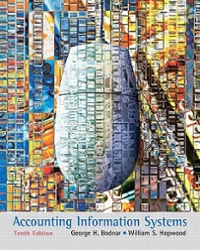Question
JAGUAR LAND ROVER PLC: BOND VALUATION Jaguar Land Rover Automotive plc (JLR), a wholly owned subsidiary of the Indian company Tata Motors Limited, announced, on




JAGUAR LAND ROVER PLC: BOND VALUATION
Jaguar Land Rover Automotive plc (JLR), a wholly owned subsidiary of the Indian company Tata Motors Limited, announced, on March 3, 2015, an issue of Senior Notes (bonds) worth US$500 million1 and due in 2020 at a coupon rate of 3.5 per cent per annum (p.a.), interest payable semi-annually. The net proceeds of this issue were to be primarily applied to repurchase the company's outstanding Senior Notes worth $410 million, issued on May 19, 2011, and due on May 15, 2021(see Exhibit 1). These outstanding Notes carried a coupon rate of interest of 8.125 per cent p.a., payable two times per year.2 In March 2015, the indicative pricing of these Notes in the Luxemburg Bourse signaled an 11 per cent premium over face value (see Exhibit 2). The reference treasury security for these Notes was the U.S. Treasury Notes due May 15, 2016, that carried a coupon of 0.25 per cent p.a. (see Exhibit 3). This issue was the company's second such refinancing in two months.
The bond buyback was to be through a tender offer starting immediately and ending on March 30, 2015. Existing bondholders had an option to sell their holdings to the company or roll over their existing holdings to the new security.3
No company would forego such an opportunity to halve its interest expenses and improve its bottom line. But can such a simple, positive-sum game exist in an efficient market?
JAGUAR LAND ROVER PLC
The 2008 financial meltdown in the United States proved especially cruel to the auto sector companies. As part of its corporate survival, revival and restructuring strategy, Ford Motor Company sold its Jaguar and Land Rover brands to Tata Motors Ltd., an Indian automobile manufacturing company on June 2, 2008, for a net consideration of $2.3 billion4 (approximately GBP1.47 billion).5 The volumes of these brands saw a 32 per cent drop in the 10 months after the takeover, and JLR posted a net loss of GBP402.4 million for the period ending March 31, 2009.6
By fiscal year (FY) 2011, however, the company had managed a turnaround and posted a post-tax profit of GBP1,035.90 million.7 In 2011/12, JLR issued both dollar-denominated and pound-denominated debt to fund investments in its U.S. and European businesses respectively. This multi-currency funding also helped JLR to restore a natural hedge for mitigating currency risk.8 The next four years saw JLR turning into the cash cow that supported the parent company in the face of a lackluster performance in the latter's domestic market. For the year ended March 31, 2014, JLR comprised more than 80 per cent of the consolidated automobile sales revenue for Tata Motors and was solely responsible for the consolidated company posting operating profits (see Exhibit 4).9
By September 2013, ratings agency Moody's Investors Service had upgraded JLR's bond issues from Ba3 to Ba2 with a "stable" outlook. Besides the impressive volume and revenue growth as well as earnings before interest, tax, depreciation and amortization (EBITDA) margins posted by JLR, the ratings upgrade was attributable to the company's positive free cash flows in FY2013 despite increased capital expenditures (capex) and dividend payments (see Exhibit 5). Another important factor contributing to this ratings upgrade was JLR's conservative financial strategy in terms of leverage and comfortably spread- out bond repayments (see Exhibits 1 and 6).10
Analysts at Moody's, however, expected the next few years to see free cash flows turning negative on the back of increased capital investment and research and development. Both Standard and Poor's and Moody's rating services maintained JLR's credit rating at BB and Ba2 respectively, while revising their outlooks to "positive" in late 2014.11 With a capex of GBP3.6 billion to GBP3.8 billion lined up for FY2016, the chief financial officer of Tata Motors was quoted as saying the company was "cautiously optimistic about cash flow in JLR next year."12
It was evident that JLR wanted to benefit from the impressive turnaround in its fundamentals. But would efficient bond markets allow firms to reap such benefits? Who gains and who pays in such deals?
EXHIBIT 1: JAGUAR LAND ROVER'S FINANCING ARRANGEMENTS AS AT DECEMBER 31, 2014






Step by Step Solution
There are 3 Steps involved in it
Step: 1

Get Instant Access to Expert-Tailored Solutions
See step-by-step solutions with expert insights and AI powered tools for academic success
Step: 2

Step: 3

Ace Your Homework with AI
Get the answers you need in no time with our AI-driven, step-by-step assistance
Get Started


